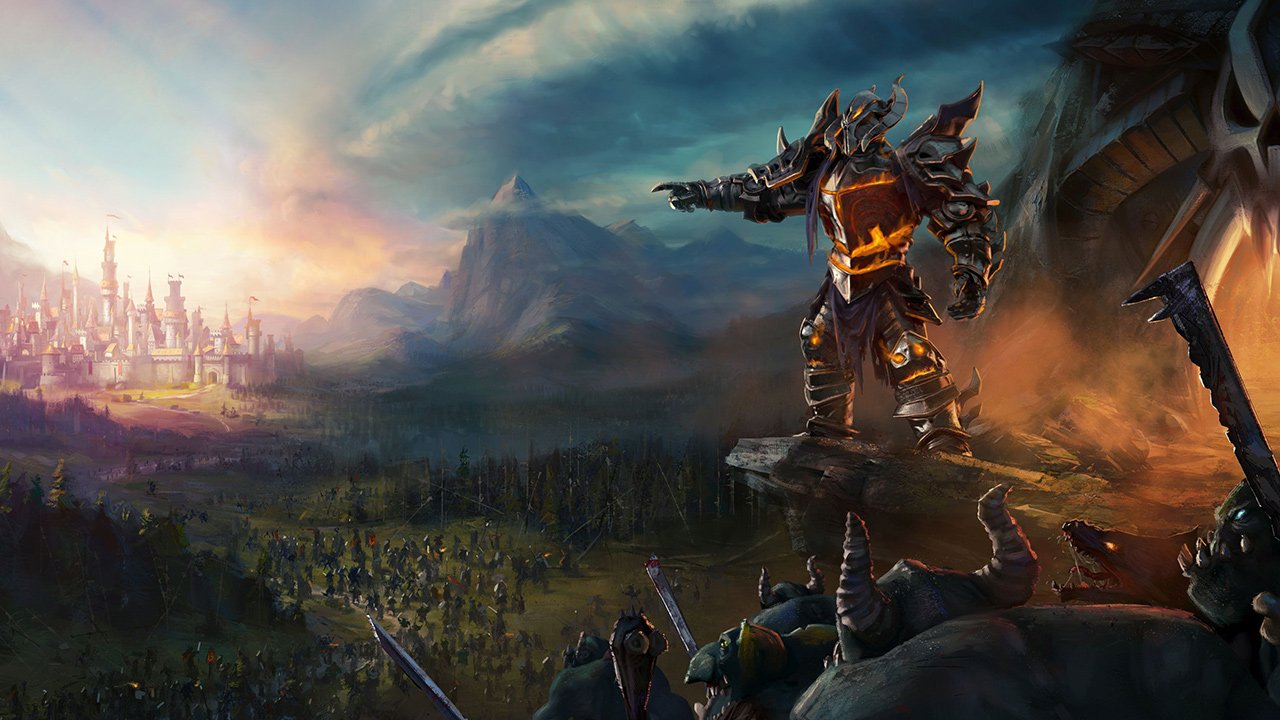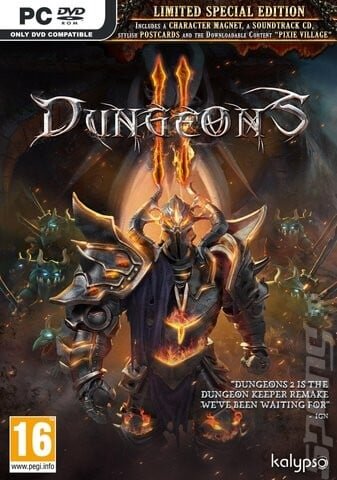When Dungeon Keeper released in 1997, developer Bullfrog was going strong and Peter Molyneux was still building a reputation for creative design and adding clever twists to tired formulas. You can practically imagine the studio’s first brainstorming session: what if instead of playing as the good guy, you controlled the hand of Evil? Manipulating minions you could construct an underground dungeon, accumulate treasure and defend against heroes who sought to invade and plunder.
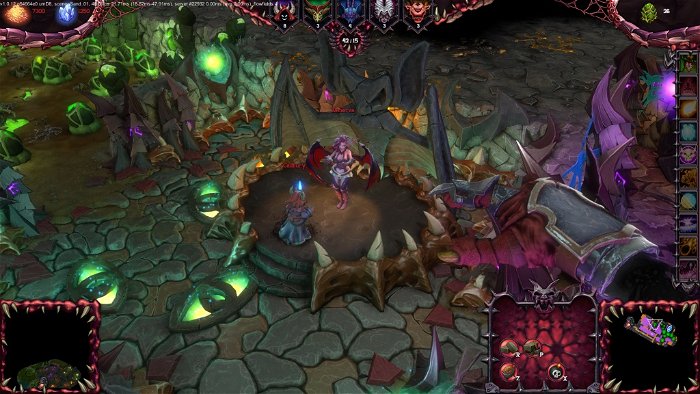
For whatever reason, dungeon management simulations and God games have largely been relegated to history. Publisher Kalypso however aren’t ones to let current sensibilities dictate the kind of games they help create; they know that a lot of people want a new Dungeon Keeper. Amongst its excellent strategy game line-up of (Sins of a Solar Empire, Tropico), lies the disappointing Dungeons. It was clear where the game’s influence lay, but its injection of new ideas simultaneously diluted the core experience and failed to elevate the game above what was offered back in 1997. The sequel, Dungeons II, has truer ambitions, although its influences are just as transparent. Once again you can imagine the brainstorm: what if once you’ve constructed your underground lair you can send your evil minions top-side to stick it to the good guys?
“Kevan Brighting feels like an excuse not to have bothered with an original plot or interesting world.”
Dungeons II is a game of two parts. The first is a relatively faithful dungeon management segment. As the floating hand of Absolute Evil you can indirectly manipulate pesky minions, ordering them to carve corridors and rooms for you and to bring you treasure. It’s a game of building infrastructure, of using the gold your minions mine to upgrade your dungeon and recruit larger and more powerful monsters.


In order to recruit Orcs you’ll need to build a brewery and have a minion working there to produce kegs of beer. To build traps you’ll need a Goblin to work the factory for parts. Like the original Dungeon Keeper, heroes will invade your lair, and so traps are useful for slowing their progress. A well placed spinning ball and chain or bomb-rigged treasure chest can soften up greedy adventurers. Whilst dungeon-delving groups of heroes are a constant threat, your primary goal is always above ground, which means the defensive traps often play second fiddle to waging war. Once you’ve built a big enough army you can send your group of monsters up for fresh air and some pillaging of their own.
“Your primary goal is always above ground, which means the defensive traps often play second fiddle to waging war”
This is the second part of Dungeons II – a slice of conventional real-time strategy. In the lush forests above ground the indirect pull of your evil hand is conveniently forgotten. Instead, you’re given complete control over your roaming war band. Your monsters level up as you move about the map wiping out villages and scattered groups of wildlife. As you do, the landscape alters to reflect this. Forests wither and great pools of lava boil to the surface. You can equip your footmen with items that boost their health and attack. These light RPG mechanics, when set alongside Dungeons’ colourful fantasy graphics style, can only remind you of one thing – Warcraft III.
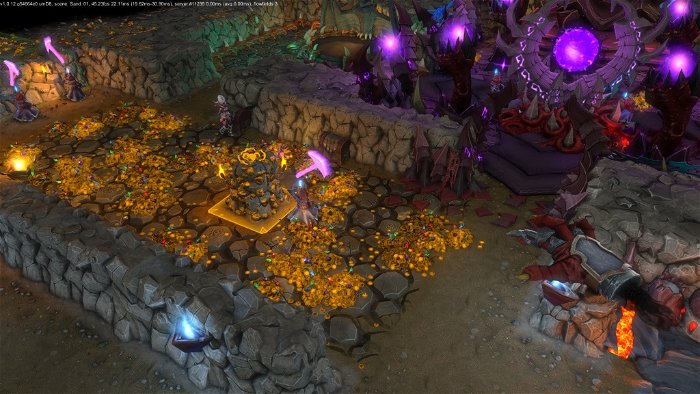
The two halves of Dungeons II make up an odd and often conflicting blend. It makes some sense for your minions to rise from the depths, but the linear nature of the campaign missions, with their hero units and strict progression, clash with the more open ended dungeon management systems. Because of the enforced mission structure, the underground parts feel less impactful. Whilst the original Dungeon Keeper was a simulation where conflicting factions lived, Dungeons II feels more like a streamlined base-builder where you’re simply preparing for war in the overworld.
Flitting between indirect and direct control feels weak thematically, but Dungeons II is a game that takes neither its story nor its world seriously. Kevan Brighting (The Stanley Parable) narrates the entire campaign. Whilst his voice is one you’ll rarely tire of hearing, his fourth-wall breaking act is rinsed for everything its worth. The self-referential “satire” is used as a crutch, with in-world occurrences like the slaughter of My Little Pony-style unicorns rare one-offs. Beyond the narration Dungeons II isn’t particularly funny. More often than not Kevan Brighting feels like an excuse not to have bothered with an original plot or interesting world.
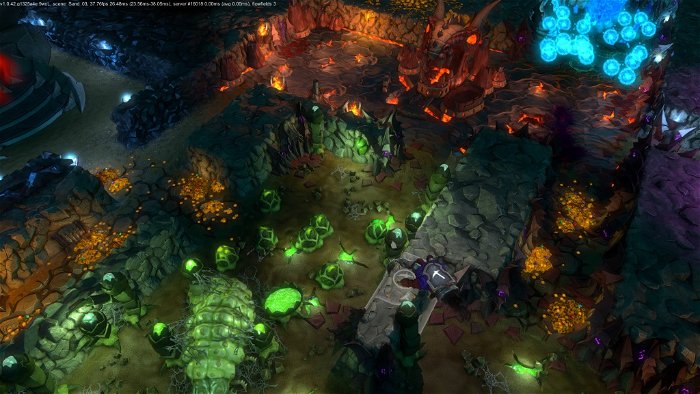

There are plenty of options in managing the dungeon, and towards the end of the campaign you’re given control of a second faction: the demons. They have a considerably different play style, involving torture chambers and whipping succubi. On the other hand, the general flow between the underground and overworld remains. There’s no denying that Dungeons II has tried something new. Unfortunately, what’s new is simply the blending of two old parts that don’t work well enough in conjunction. The streamlined dungeon management can be enjoyable, and it’s far more extensive than the original Dungeons – it’s simply not as comprehensive or as open of a simulation as Dungeon Keeper was back in 1997.
